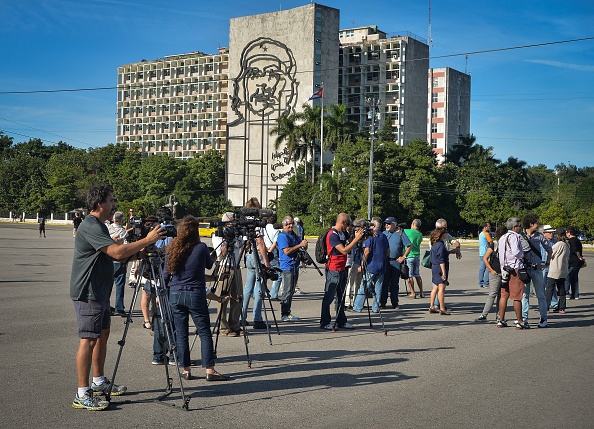For the past 50-odd years, Cuba has steadily entrenched its image as an isolated, and consequently somewhat anachronistic, island. Recently, however, both via its own initiative and certainly pushed to the fore by US president Barack Obama’s announcement of a thaw in the trade embargo between the two countries, this has begun to change. The result is that international business is anticipating opportunities in a hitherto underexploited ecotope, and the international artworld now speculates on how this will affect Cuban art, its makers and its markets.
The island’s unique position in global politics has been the subject of many works by both exiled and local artists. Among those works are Wifredo Lam’s classic El Tercer Mundo (The Third World, 1965–6), a painting of a cosmos of interconnected human, faunal and vegetal formations that was originally conceived for the presidential palace and is today on display in Cuba’s Museo Nacional de Bellas Artes. Critics like Havana-based Gerardo Mosquera have contextualised Lam’s work within the anticolonial struggles of Cuba. Lam also contributed to visualising the hybrid identity of ‘La Isla’ and the transformations that led to its ideological isolation and – analogous to the consequences of the Galápagos Islands’ geographical remoteness – to a new collective consciousness evolving from the disconnected local conditions.
When I visited Cuba last December, I experienced isolation mainly in the form of limited Internet access – only 3.4 percent of households are connected. The enforced break from emailing and Googling didn’t so much feel like travelling back in time as like being in a place where past and present moments were amalgamated: for example, the taxi driver picking me up from the airport wore an Ed Hardy t-shirt and talked into his Internetless smartphone while driving a blue 1954 Pontiac. And when it comes to art, new initiatives such as the art space Fábrica de Arte Cubano (‘Factory of Cuban Art’) or a gallery and coffeehouse bearing the Magrittean title Esto no es un café (‘This is not a café’) and operated by curator Mayrelis Peraza, alongside internationally exhibiting Cuban artists or artists with Cuban heritage such as Coco Fusco, Wilfredo Prieto and Los Carpinteros, testify to gradual change.
Even if Bruguera’s performance became a work that was something other than had been intended, the fact that any kind of artwork was deemed to have enough impact to merit its censorship can be seen (with a big dose of irony) as something positive
Only two weeks after Obama’s announcement, another headline moved the (art) world’s eyes to Cuba. On 30 December 2014, artist Tania Bruguera was arrested to prevent her staging the performance Tatlin’s Whisper #6 at the Plaza de la Revolución. The work invites people to step onto a podium and share their opinions for one minute via microphone. In 2009 the piece had been exhibited without interference during the tenth edition of the Bienal de La Habana, organised by the Centro de Arte Contemporáneo Wifredo Lam. The press release for the event, with the hashtag #YoTambienExijo (‘I Also Demand’), read: ‘The aim… is that Cubans peacefully express what ideas they have about their nation and its future, after the re-establishment of relations between Cuba and the United States.’ While Bruguera stated she thought the government was ready for differences in opinion, this clearly proved not to be the case. She and her collaborators were arrested before they could get to the announced location, and the artist was detained on two further occasions afterwards: when she tried to organise a press conference on Havana’s harbour promenade, Malecón; and when she demanded the release of people planning to participate in the performance who were still being held at the prisoner processing centre. An open letter to the Castro government by artworld figures followed, together with articles on how official Cuban press and some art outlets have misreported the event. Bruguera’s passport was subsequently confiscated, and as of early February she was being told she would need to remain in Cuba for an additional 60 days while prosecutors decide whether or not to press charges.
It will be interesting to see how artists invited to this year’s biennial will respond to the recent impediments to freedom of speech. Somewhat ironically, the incidents moved art from an isolated position with ‘the explosive force of a very large banana-cream pie’ (as Kurt Vonnegut, Jr, once described the impact of all art and literature opposed to the Vietnam War), to that of something that might have a very real political effect. Even if Bruguera’s performance became a work that was something other than had been intended, the fact that any kind of artwork was deemed to have enough impact to merit its censorship can be seen (with a big dose of irony) as something positive. And while it remains to be seen how Cuba will change if the US Congress agrees to go ahead with the thaw in relations between the two countries, one hopes on a more general level that the view that art has some sort of importance besides any projected economic value (the usual reason an artwork makes the news) is one that will persist.
This article was first published in the March 2015 issue.
